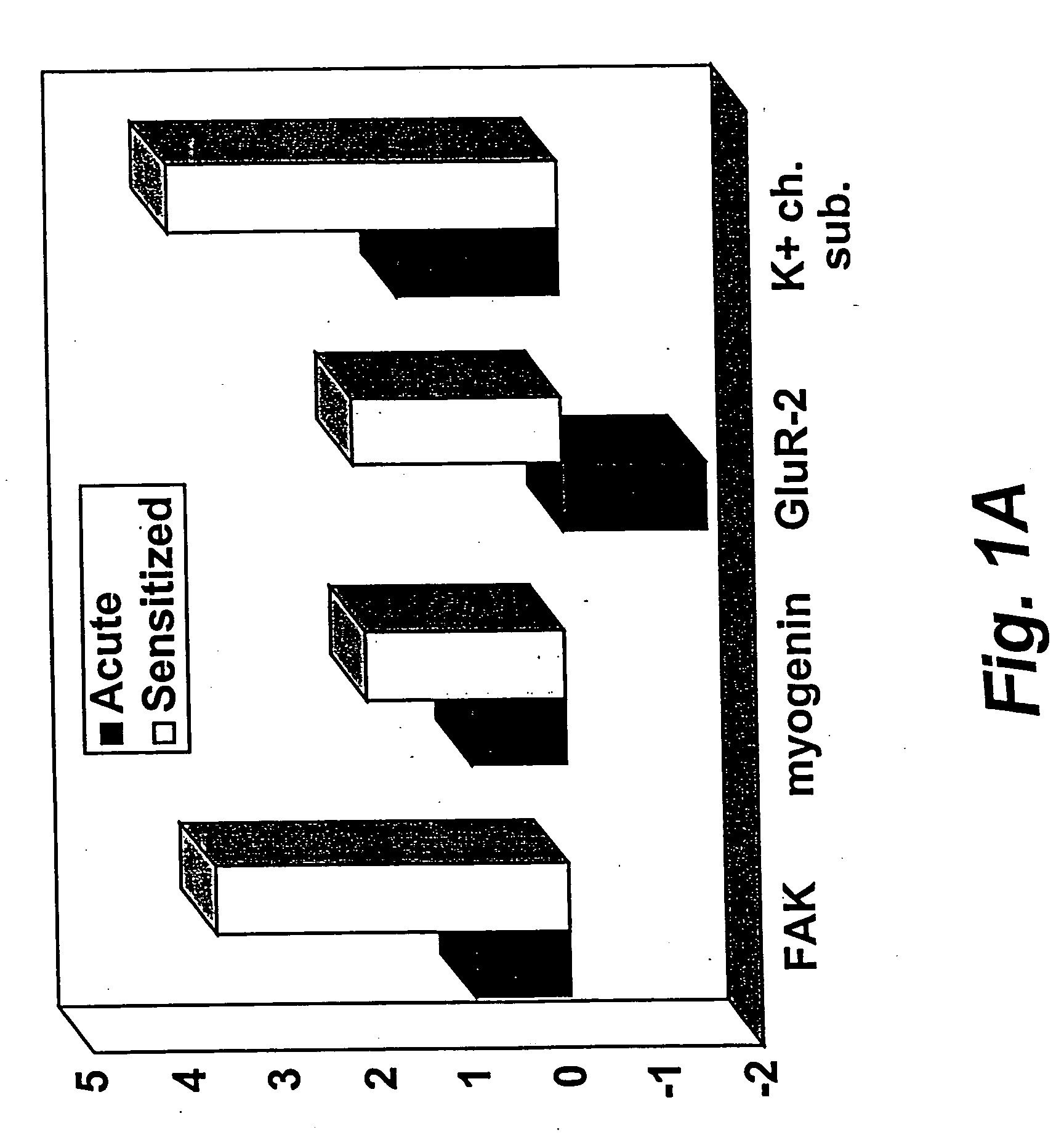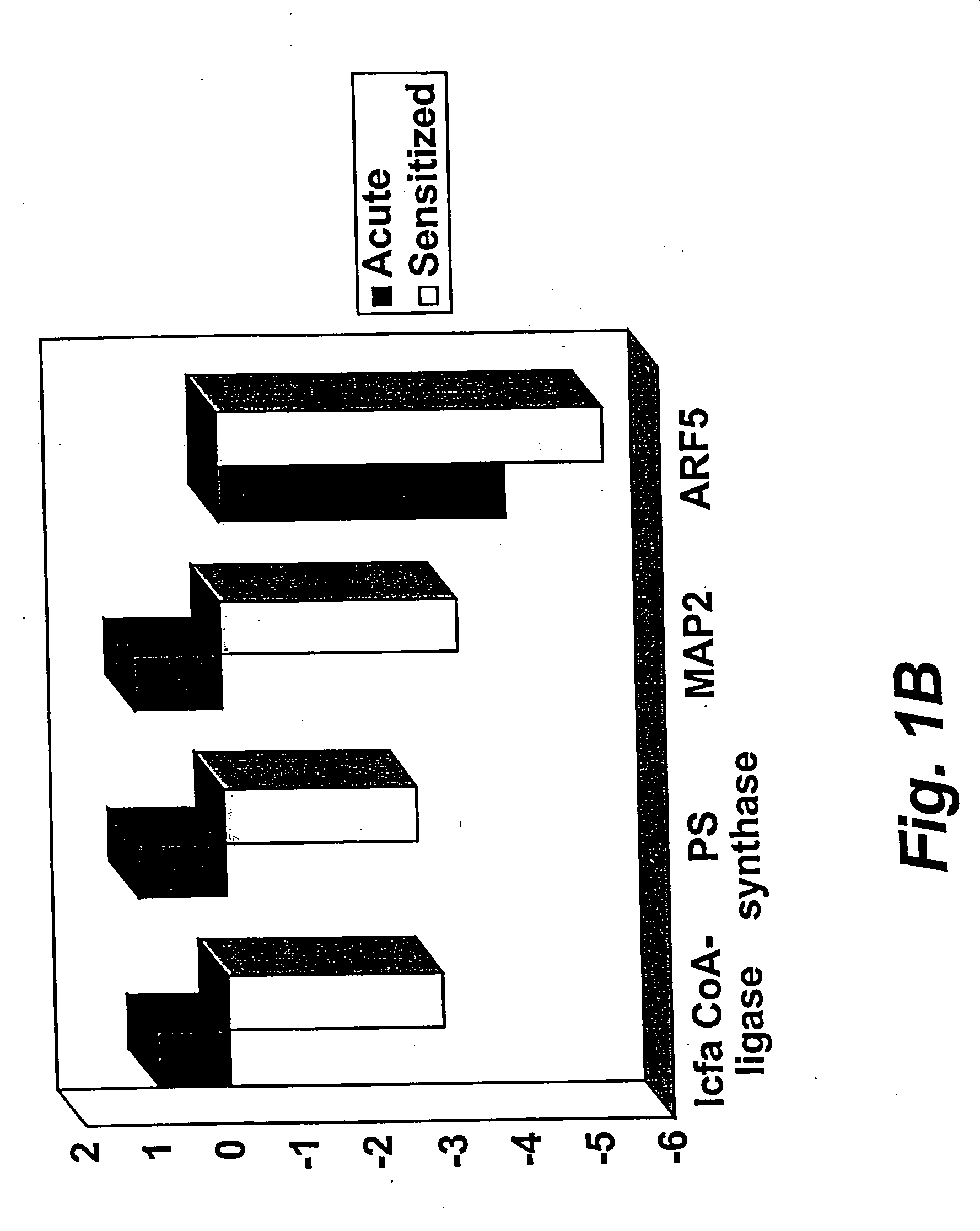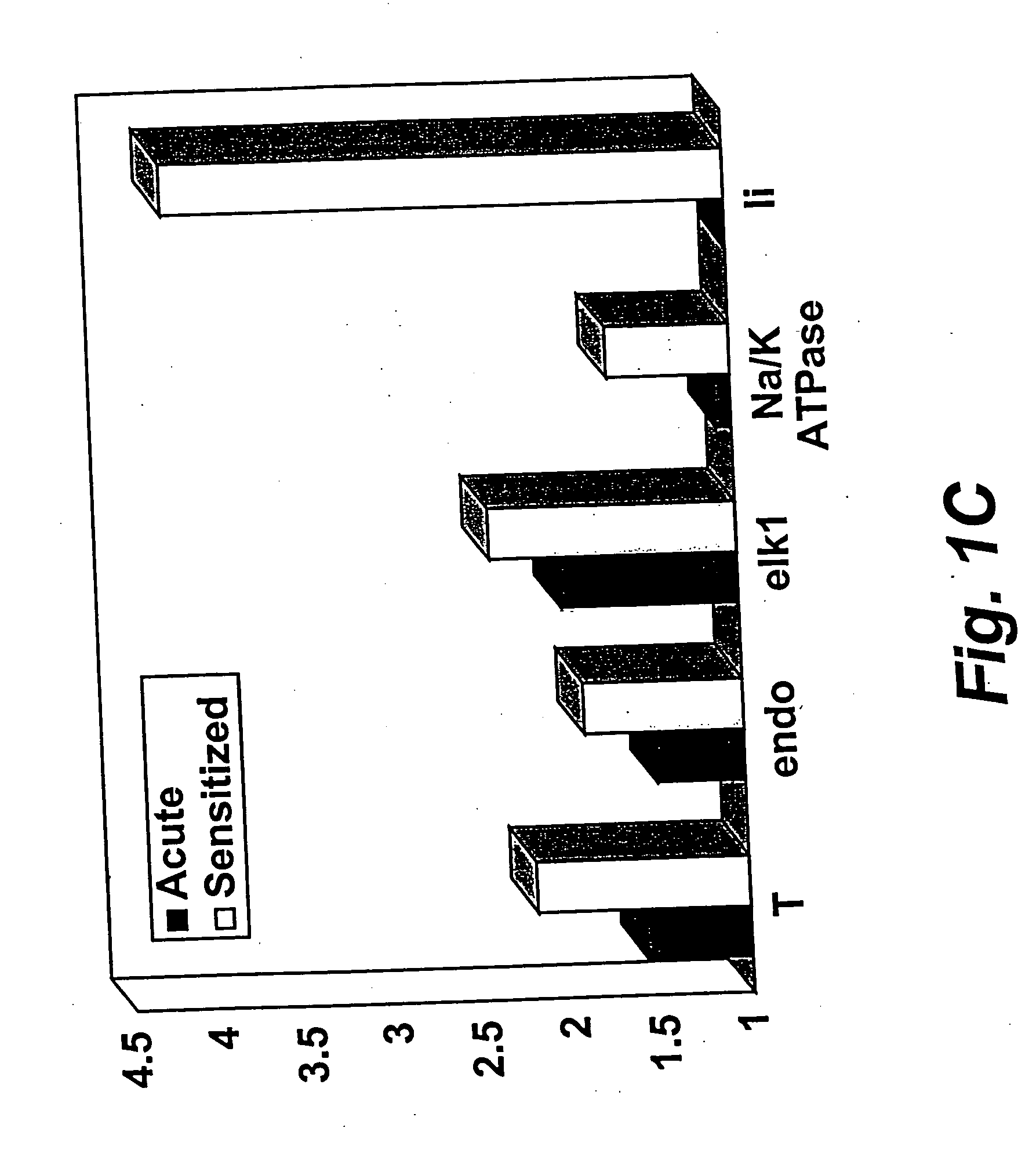Composition and methods for evaluating an organism's response to alcohol or stimulants
a technology of organisms and alcohol, applied in the field of functional genomics, can solve the problems of billion dollars in cost to society, major public health problem of substance abuse,
- Summary
- Abstract
- Description
- Claims
- Application Information
AI Technical Summary
Benefits of technology
Problems solved by technology
Method used
Image
Examples
example 1
Effects of Cocaine Sensitization on Mice
[0255] Mice were treated with intra peritoneal injection of cocaine (10 mg.kg) or saline every other day for up to 12 days such that they developed cocaine sensitization. Sensitization refers to an increase in locomotor activity that occurs following repeated exposure to drugs of abuse. Sensitization is stable for long periods of drug abstinence and thus clearly represents a plasticity that generates an increased CNS response to abused drugs as seen with addiction.
[0256] Behavioral testing for locomoter activity was done on each injection day. The results are illustrated in Tables 2-5 and in FIGS. 1A (VTA inductions), 1B (VTA inductions) and 1C (Nucleus Accumbens). Acute treatment was a single dose of cocaine.
[0257] As shown in FIG. 1A, FAK, myogenin, and K+ch. sub. all result in increased VTA inductions both by acute and sensitized exposure to cocaine, while GluR-2 demonstrates an increase in VTA induction after sensitized exposure but a d...
example 2
Effect(s) of Ethanol on SHSY-5Y Cells in Culture—Study 1
[0261]FIG. 2A depicts the results from an initial study on the effects of ethanol on gene expression levels in SHSY5Y cells. Hybridization strength is given a baseline of 1 and increased intensity is expressed in as a multiple of the baseline, i.e., 2-fold, 3-fold, 4-fold etc. The hybridization intensity has been shown to be proportional to expression level. At an ethanol concentration of 50 mM, DBH (dopamine b-hydroxylase) shows a 3 fold greater hybridization intensity than the control, while PDGFR, DLK, GABA-β3, PTK and NPTX2 all hybridize at just over the baseline. At an ethanol concentration of 100 mM, DBH increases to a 5 fold hybridization intensity over the baseline, while DLK, PTK and PDGFR, have increased to 3 fold and GABA-β3, and NPTX2 are around 2 fold. At an ethanol concentration of 150 mM, DBH hybridization intensities have risen to nearly 9 fold the baseline, DLK is at nearly 7 fold, and PDGFR is at 5 fold. Inte...
example 3
Effect(s) of Ethanol on SHSY-5Y Cells in Culture
[0265] Ethanol is one of the most commonly used and abused drugs worldwide. Like opioids, amphetamines or nicotine, upon chronic exposure, ethanol produces behavioral adaptations including tolerance, sensitization, dependence and craving. While in recent years dramatic progress has been made in understanding its acute effects in the central nervous system (CNS), molecular mechanisms underlying the development of alcohol addiction remain poorly understood. In contrast to most drugs of abuse that act by binding to a specific receptor, ethanol appears to affect the function of multiple neurotransmitter systems. Thus, acute ethanol has been shown to inhibit activation of excitatory NMDA receptor, opioid receptors and L-type voltage gated calcium channels and to potentiate activation of inhibitory γ-aminobutyric acid type A (GABAA) receptor and serotonin 5HT3 receptor. Numerous studies have also described an effect of ethanol on signaling ...
PUM
| Property | Measurement | Unit |
|---|---|---|
| Tm | aaaaa | aaaaa |
| pH | aaaaa | aaaaa |
| pH | aaaaa | aaaaa |
Abstract
Description
Claims
Application Information
 Login to View More
Login to View More - R&D Engineer
- R&D Manager
- IP Professional
- Industry Leading Data Capabilities
- Powerful AI technology
- Patent DNA Extraction
Browse by: Latest US Patents, China's latest patents, Technical Efficacy Thesaurus, Application Domain, Technology Topic, Popular Technical Reports.
© 2024 PatSnap. All rights reserved.Legal|Privacy policy|Modern Slavery Act Transparency Statement|Sitemap|About US| Contact US: help@patsnap.com










